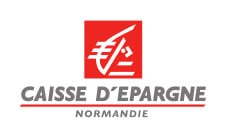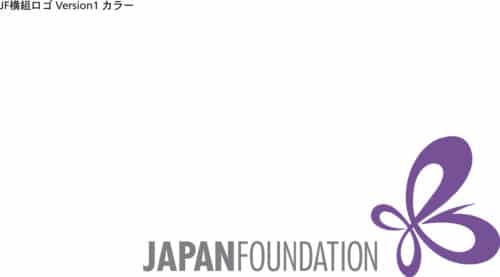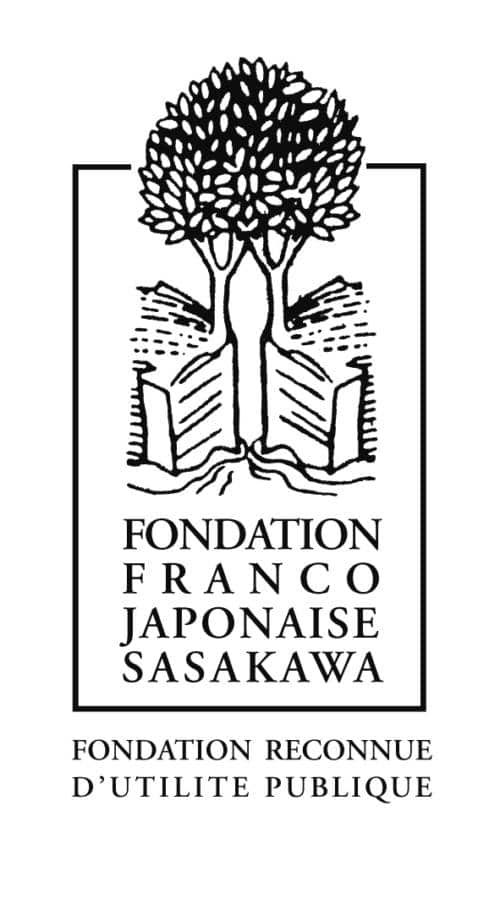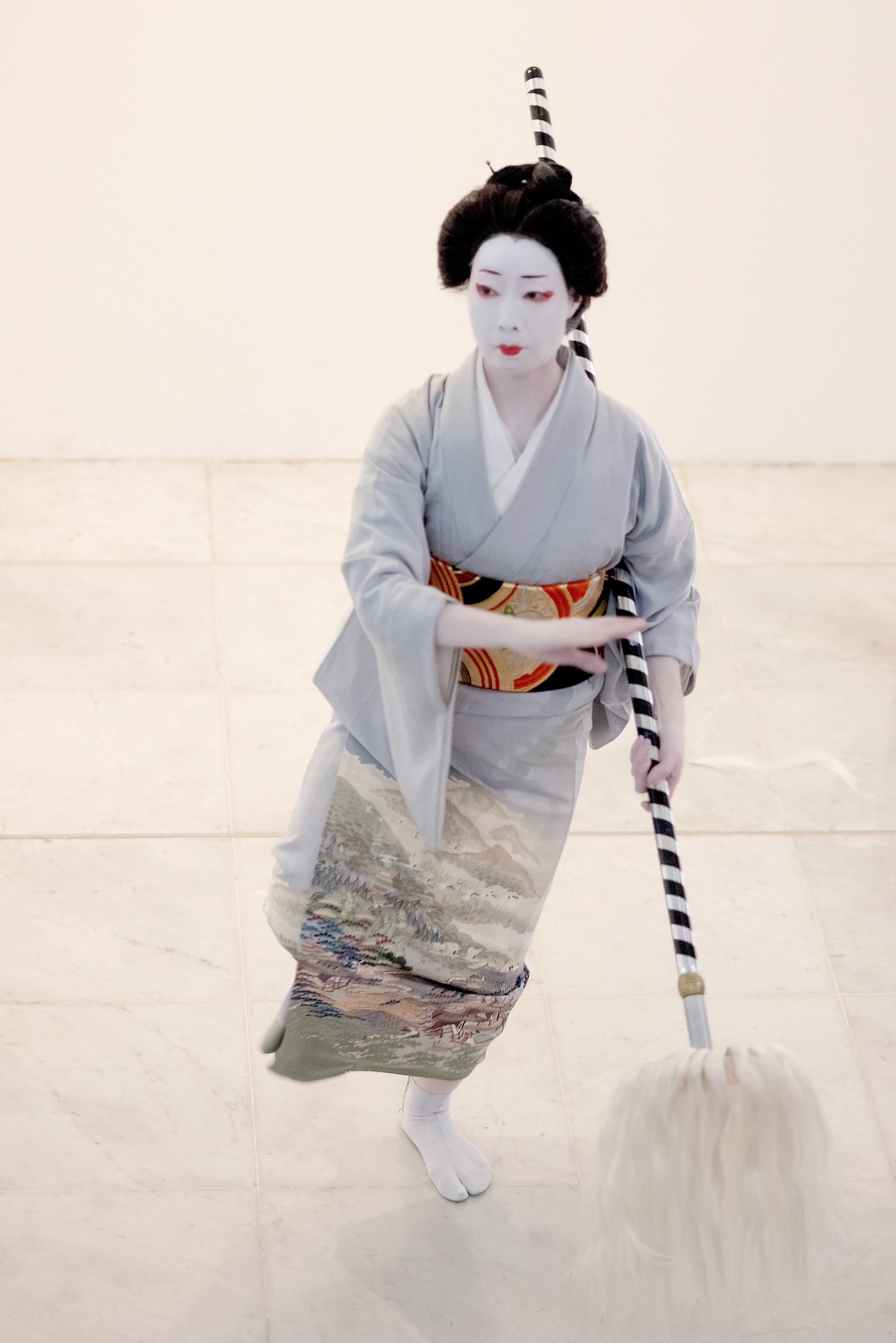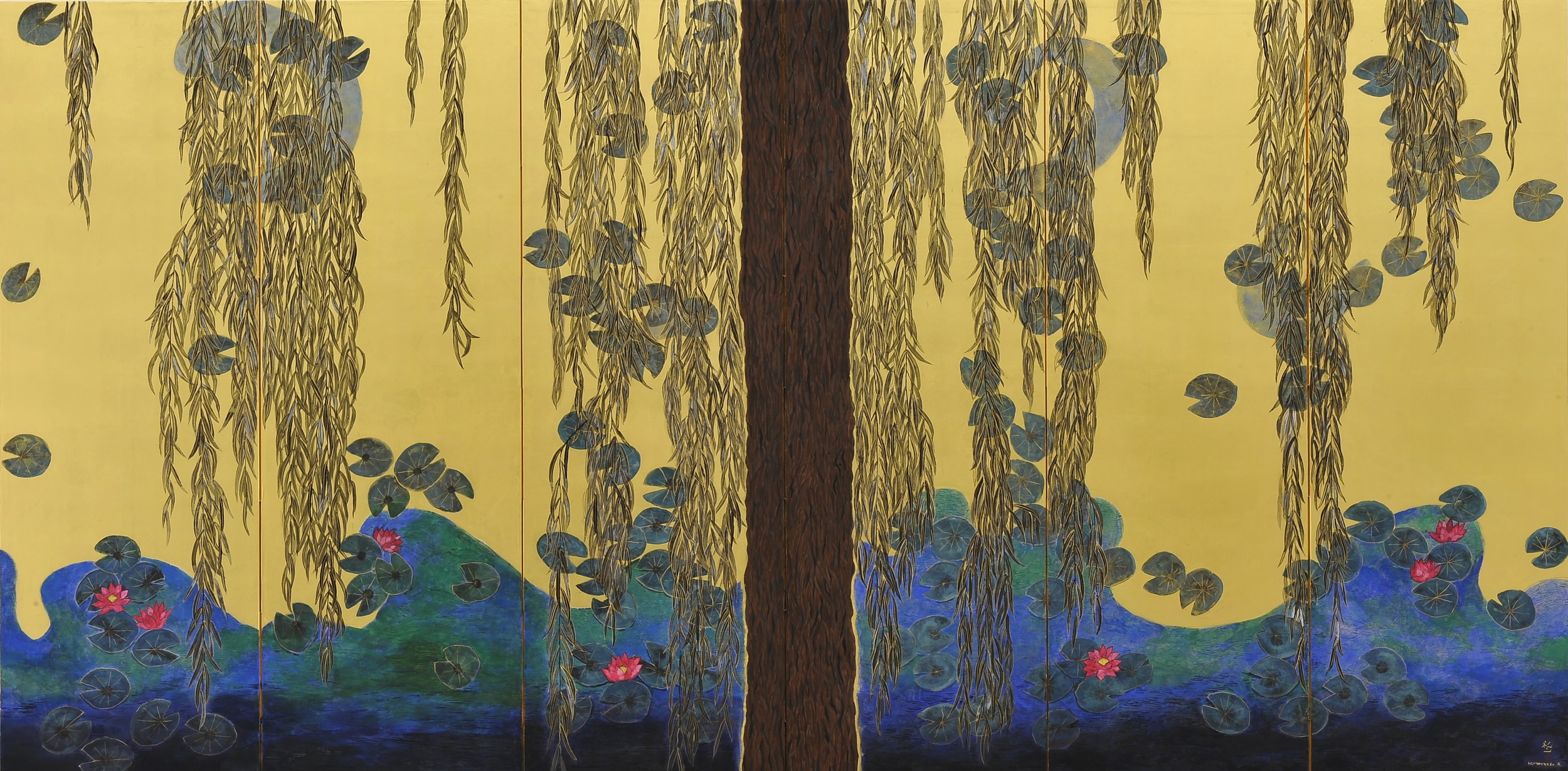
About
As part of the second edition of the Normandy Impressionist Festival dedicated to the theme of water, the musée des impressionnismes Giverny presented from July 13 to October 31, 2013 an exhibition with works of the Japanese painter, Hiramatsu Reiji, bringing together paintings and majestic screens painted according to the traditional Japanese technique, combining tradition and modernity, as well as a wide selection of Japanese prints from Claude Monet’s collection and works by the latter.
The influence of Japanese art on Claude Monet
Japanese art influenced Claude Monet as evidenced by his collection of Japanese prints which can be admired today in Giverny (The collection of the Claude Monet Foundation includes more than 231 prints from the Edo period, from Hiroshige to Utamaro and Hokusai). In 1883, Monet moved to Giverny in the Maison du Pressoir, where he lived until his death in 1926. He had the opportunity for the first time to draw the contours of his garden, a development which lasted more than twenty years, from 1883 to 1904. He transformed the orchard, called “Clos Normand”, into an enclosed flower garden. Then in 1893, he bought a plot of land below his property and began building a water garden there, to which he added a Japanese bridge. From 1915, Monet devoted himself to the Grandes Décorations intended for the Orangerie.
Hiramatsu’s homage to Claude Monet
Japanese painter Hiramatsu Reiji was born in Tokyo in 1941. He visited Paris for the first time in 1994 and discovered the Water Lilies at the Orangerie. He then enjoyed following in the footsteps of the French master, visiting Monet’s garden in Giverny. Hiramatsu had the impression of finding himself facing Japanese screens or decorative panels. Moved and overwhelmed by the beauty of this work, he decides to follow in the footsteps of Monet, in search of his thoughts and his art. He went to France several times and made long stays in Giverny where he tirelessly made sketches of the water lily pond.
The collection of Japanese prints by Claude Monet
Japanese ukiyo-e prints fascinate with their beauty, the sumptuousness of the colors, and the delicacy of the embossings or micas of gold, silver and bronze. They are often associated with the famous Great Wave of Hokusai, the colorful landscapes of Hiroshige or the delicate feminine beauties of Utamaro. They were elevated to the rank of works of art in the 19th century by the Japanese. However, when they were created, in the Edo period (1603-1868), they had little more than an advertising, media or entertainment purpose. This exhibition exceptionally presented twenty-seven prints from the collection of the French master and preserved at the Claude Monet Foundation in Giverny. The first print created from a work by the painter Hiramatsu using the traditional technique of the Edo period by the Adachi Center (The Adachi Institute of Woodcut Prints) is presented in the exhibition.
A reciprocal influence
The exhibition shows that just as Japanese prints were for the Impressionists a way of introducing a new philosophy of space and light, Monet’s paintings represent a source of creative inspiration for Hiramatsu Reiji. Gold, silver or platinum leaves, Hiramatsu Reiji uses the most precious mineral pigments for his paintings and screens with the motif of water lilies. This homage by Hiramatsu to Monet is an opportunity to discover the painting of a great contemporary artist and to reconsider the extent of the influence of Japanese art on Japanese painters, in particular on the fervent collector of prints that was Claude Monet. These two great artists come together in their absolute quest for beauty and the play of light.
The nihonga, a thousand-year-old painting technique
In this exhibition, more than twenty paintings are painted using the traditional technique of nihonga, which combine tradition and modernity. nihonga is an age-old painting technique that penetrates Japan through China and Korea. The word nihonga means Japanese painting, a term which was created at the end of the 19th century, in order to distinguish traditional Japanese painting from Western oil painting, yôga, which was very popular at the time.
Curator: Diego Candil, general director and Vanessa Lecomte, curator, musée des impressionnismes Giverny.
Scientific commissioner: Brigitte Koyama-Richard, doctor in comparative literature and professor at Musashi University in Tokyo
Exhibition placed under the high patronage of the Minister of Foreign Affairs and the Japanese Ambassador to France
In images
Zoom on the works
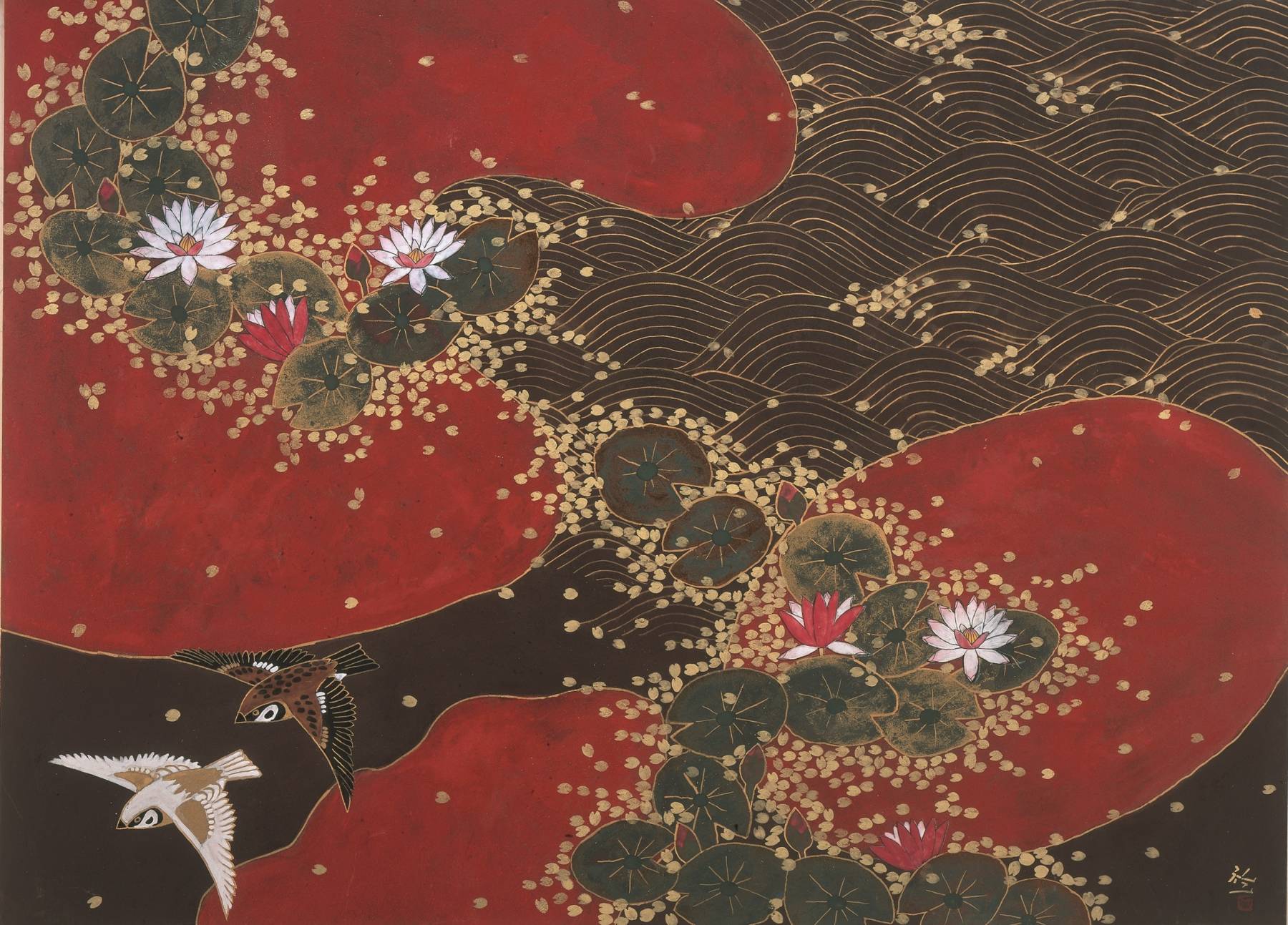
- Hiramatsu Reiji (né en 1941)
- Motifs de nymphéas – Divertissement, 2011.
- Nihonga, 72,7 x 100 cm. Giverny, musée des impressionnismes, achat à l’artiste, 2013, MDIG 2013.1.10
- © Hiramatsu Reiji © Giverny, musée des impressionnismes / photo : Takemi Art Photos
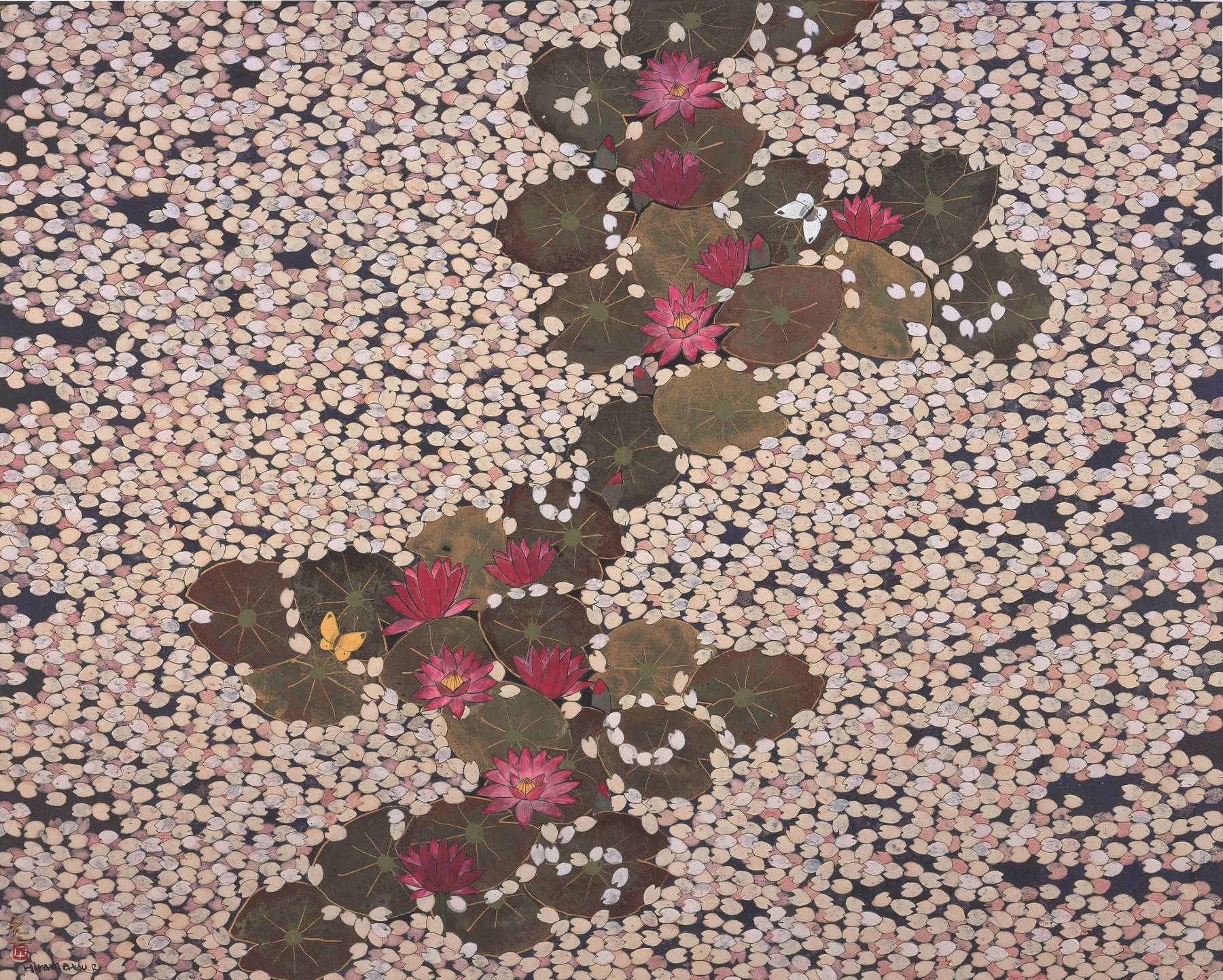
- Hiramatsu Reiji (né en 1941)
- Cerisiers et nymphéas, 2011.
- Nihonga, 72,7 x 90,9 cm. Giverny, musée des impressionnismes, achat à l’artiste, 2013, MDIG 2013.1.17
- © Hiramatsu Reiji © Giverny, musée des impressionnismes / photo : Takemi Art Photos
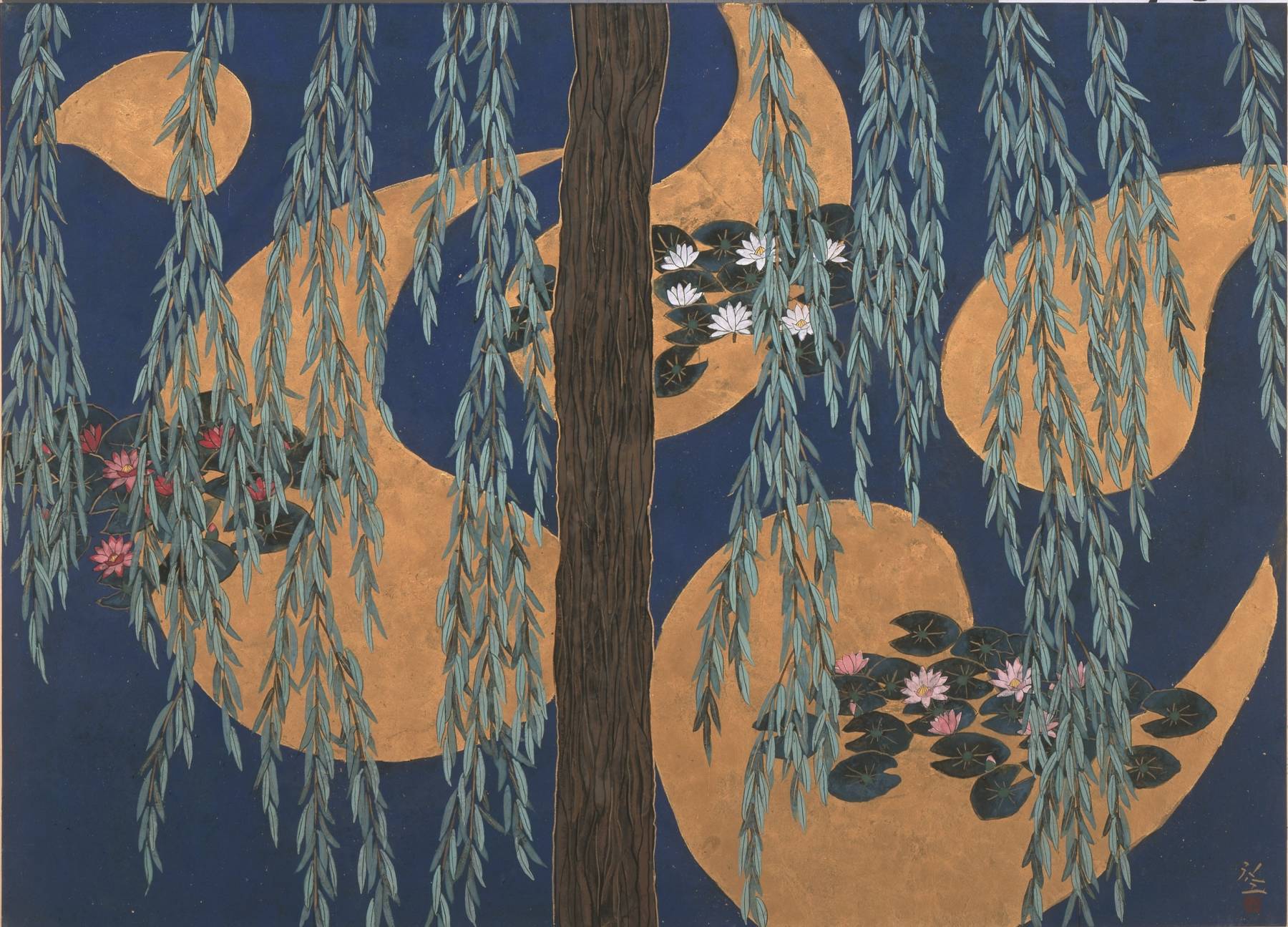
- Hiramatsu Reiji (né en 1941)
- Reflets de nuages dorés, 2010.
- Nihonga, 65,2 x 90,9 cm. Giverny, musée des impressionnismes, achat à l’artiste, 2013, MDIG 2013.1.3
- © Hiramatsu Reiji © Giverny, musée des impressionnismes / photo : Takemi Art Photos

- Hiramatsu Reiji (né en 1941)
- Giverny, l’étang de Monet ; brise légère, 2013.
- Nihonga, double paravent à 6 panneaux, 180 x 720 cm. Giverny, musée des impressionnismes, achat à l’artiste, 2014, MDIG 2014.2.1
- © Hiramatsu Reiji © Giverny, musée des impressionnismes / photo : Takemi Art Photos
Patronage
Our patrons and partners
The museum warmly thanks the patrons and partners of this exhibition.
Exhibition in progress
Hiramatsu Reiji.
Symphony of Water Lilies
from July 12, 2024 to November 3, 2024
See more

